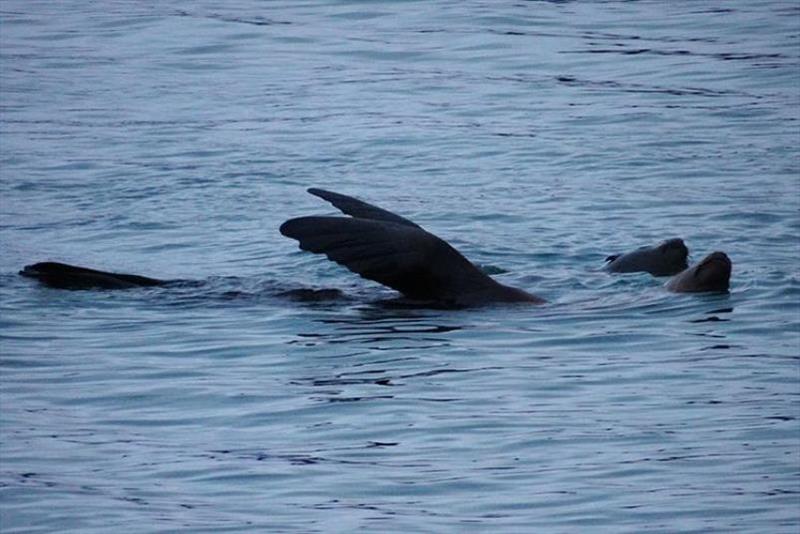
Is that Steller sea lion in distress? waving? or is it ... thermoregulation?
by NOAA Fisheries 14 May 2021 16:01 UTC

Thermoregulation © NOAA Fisheries / Kim Raum-Suryan
Imagine that you are enjoying a wonderful day along Alaska's rocky shores when suddenly you see something strange in the water. Is that an orca? You look through your binoculars and realize it is a Steller sea lion.
You see its flipper in the air, and it only surfaces its head to breathe once in a while. Is it sick or injured? Or is this normal behavior?
NOAA Fisheries often receives reports of Steller sea lions exhibiting this behavior from concerned citizens who think the sea lion may be in distress.
"When people get hot or cold, they can remove or add a layer of clothing," explains Steller sea lion expert Kim Raum-Suryan of NOAA's Alaska Regional Office. "Since Steller sea lions don't have this option, they do something a little different. They instead have this amazing ability to use thermoregulation—in other words, to regulate their own body temperature."
A Steller sea lion's core body temperature is about 100 degreesF. Heat loss in water is about 25 times faster than in air. Steller sea lions deposit most of their body fat into a thick layer of blubber just under the skin. This blubber layer insulates the sea lion's body from the cold water and provides an excess energy reserve.
However, the flippers are poorly insulated, with the blood vessels close to the surface of the skin. Sea lions often regulate their own body temperature by lifting and exposing one or more flippers as they are floating on the surface of the water. The blood vessels just under the skin dilate and either absorb heat from, or release heat to, the environment. Absorbed heat is then circulated to the rest of the body.
If you ever see a stranded, injured, entangled, or dead Steller sea lion or other marine mammal, please call the NOAA Fisheries Alaska Statewide 24-hour Stranding Hotline at (877) 925-7773. But the next time you see a sea lion or a group of sea lions with their flippers extended out of the water, there's no need to call. This is just normal sea lion behavior... but you can wave back if you want to!